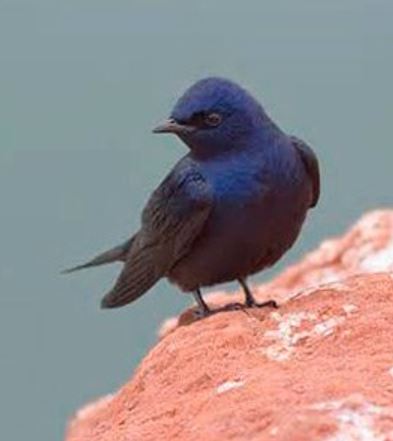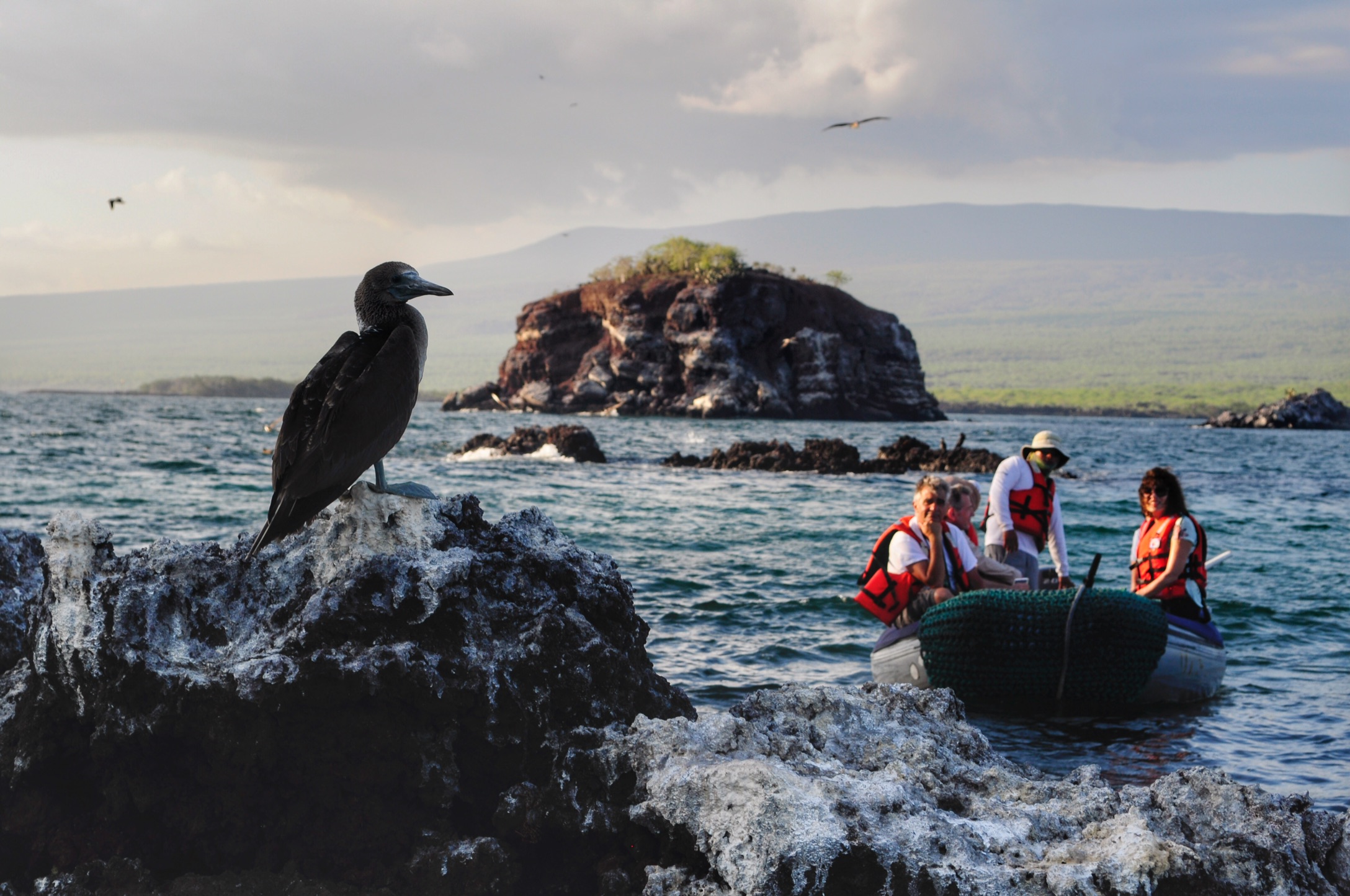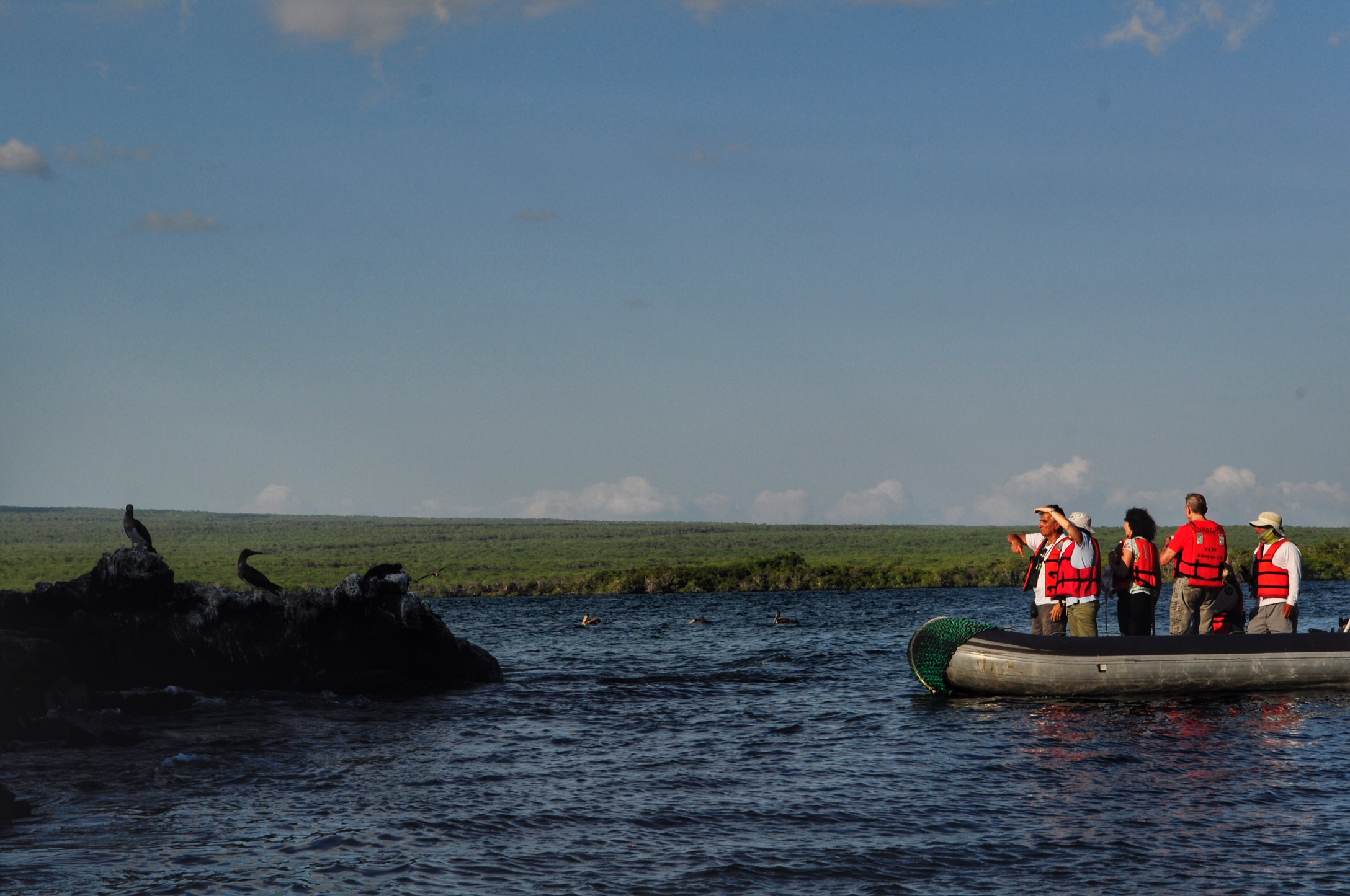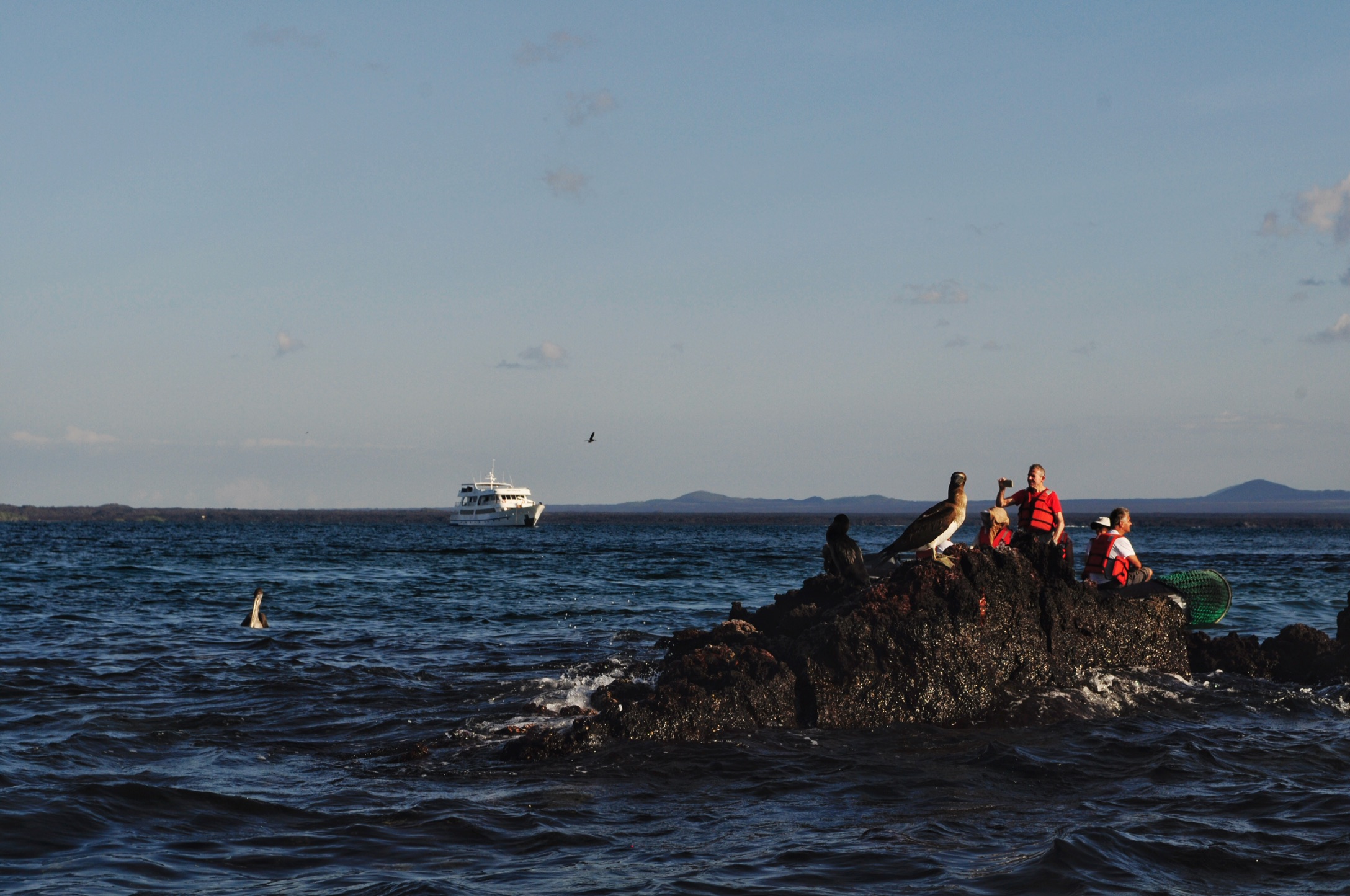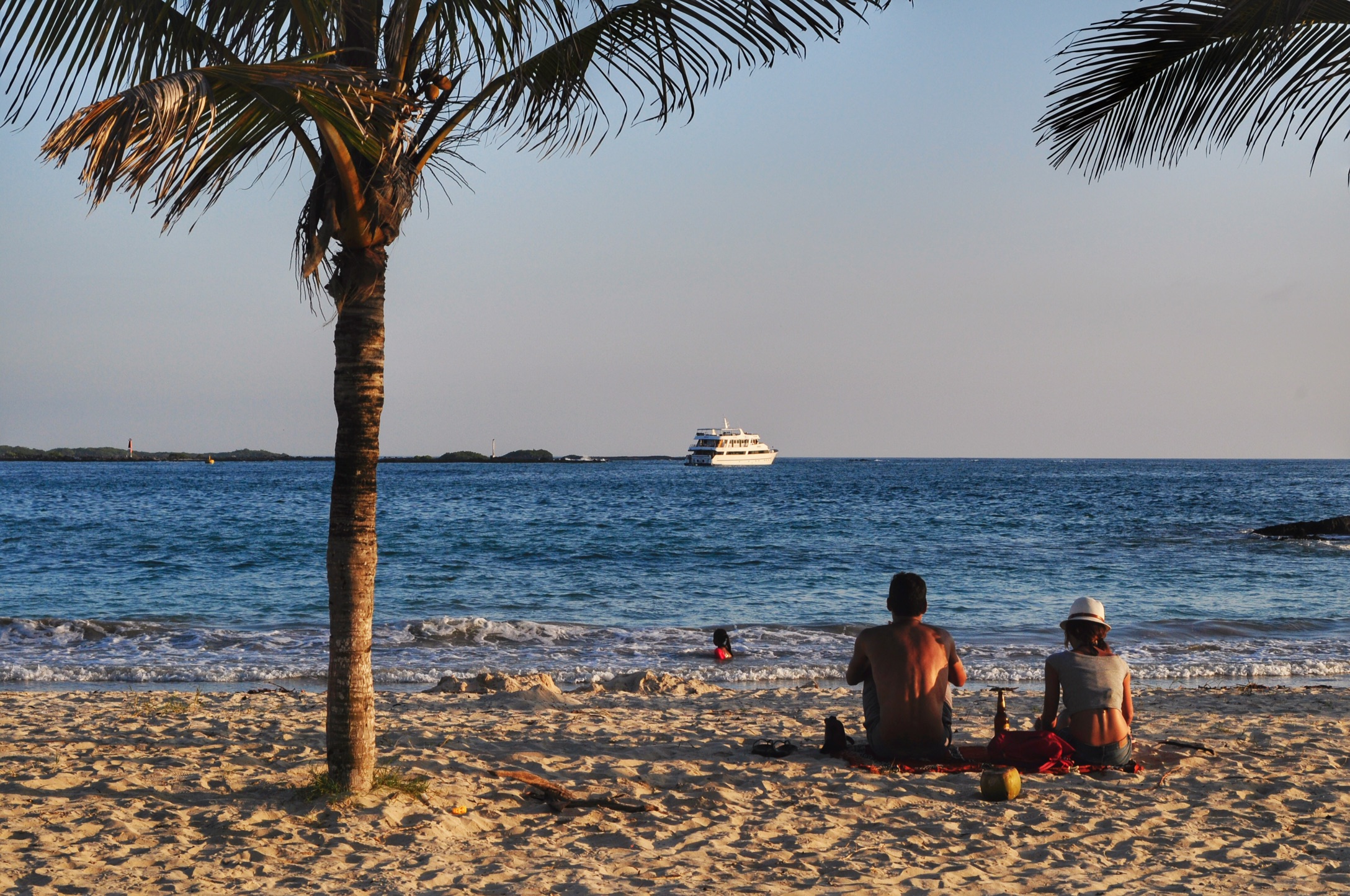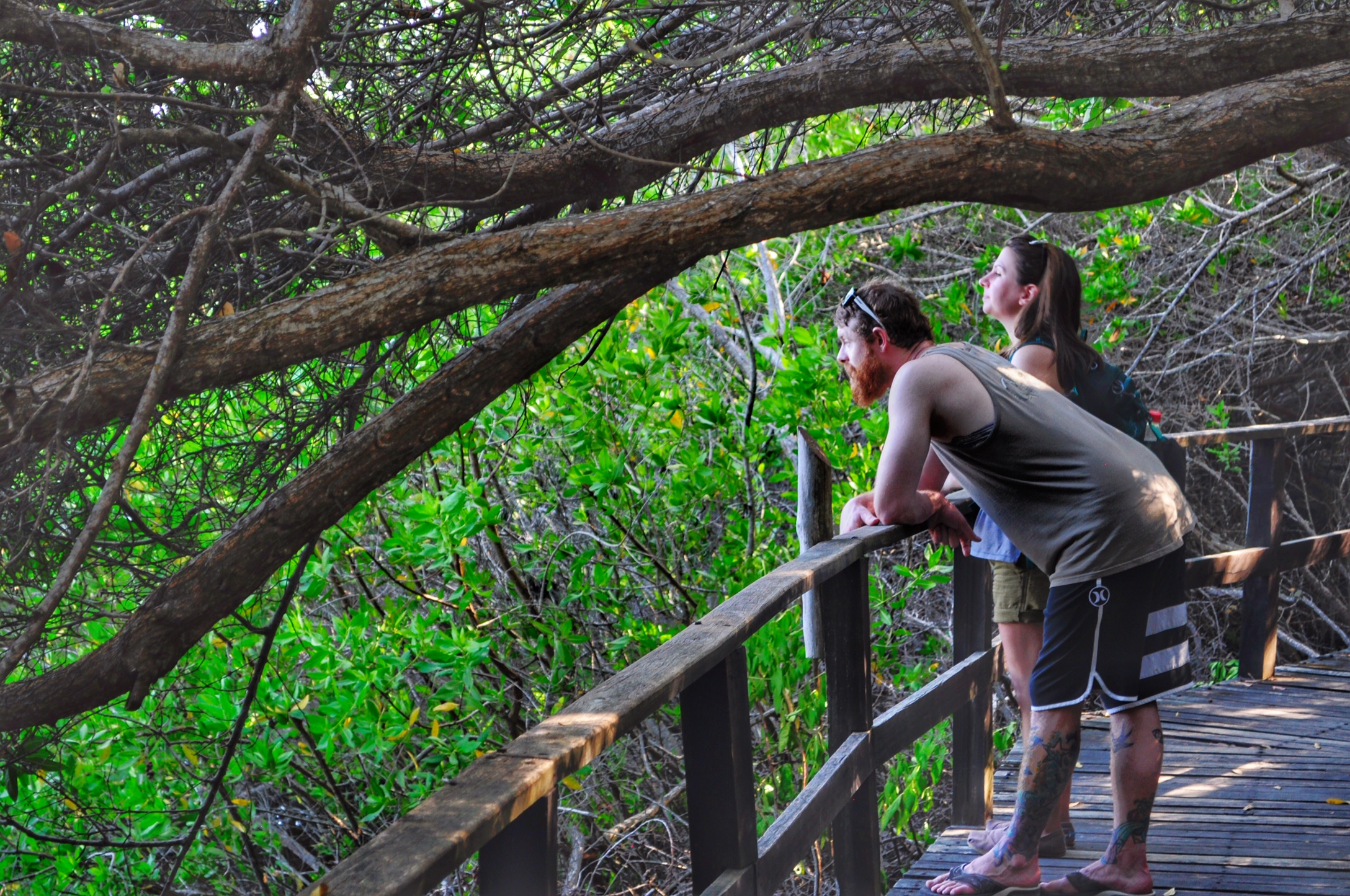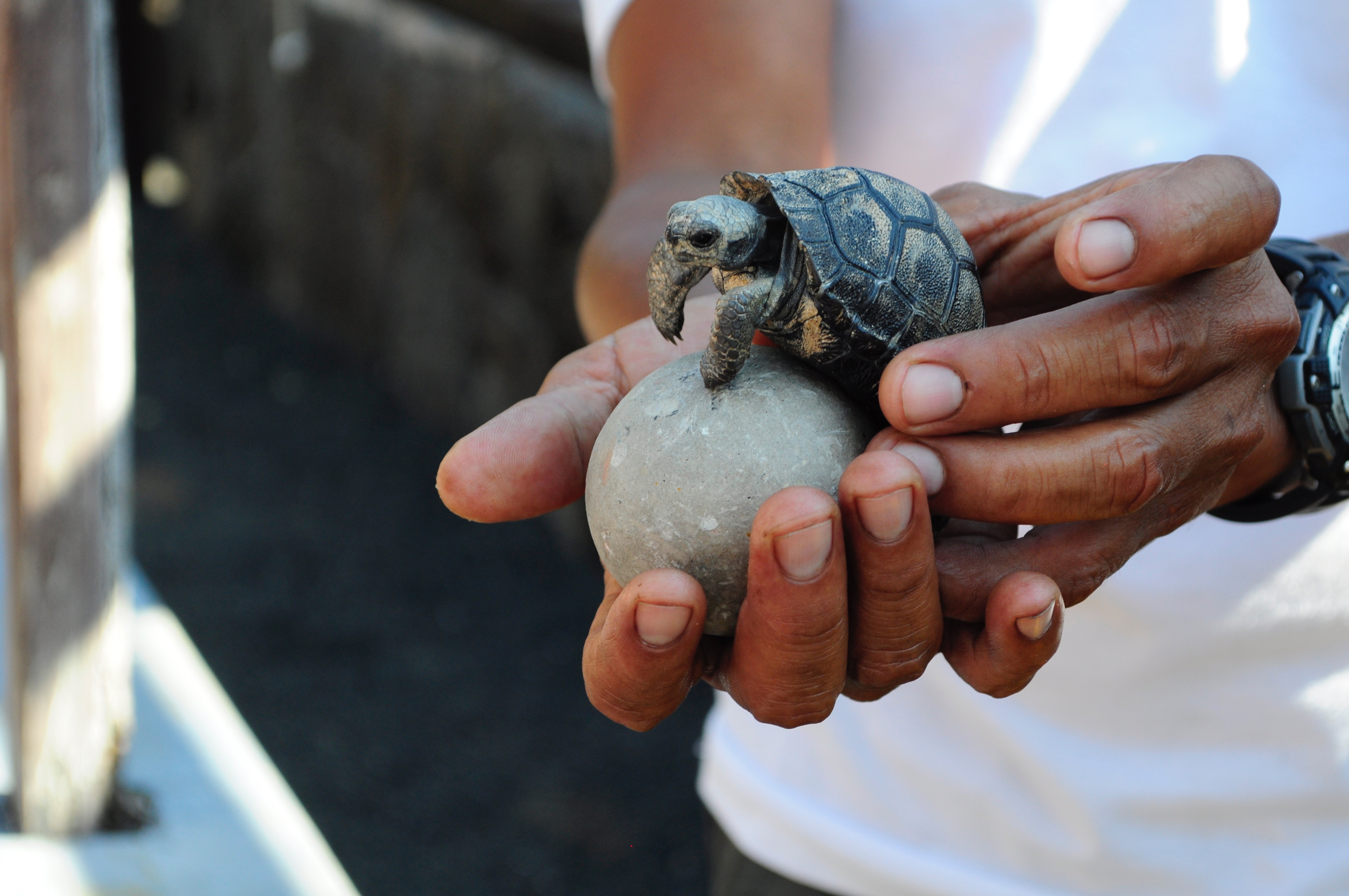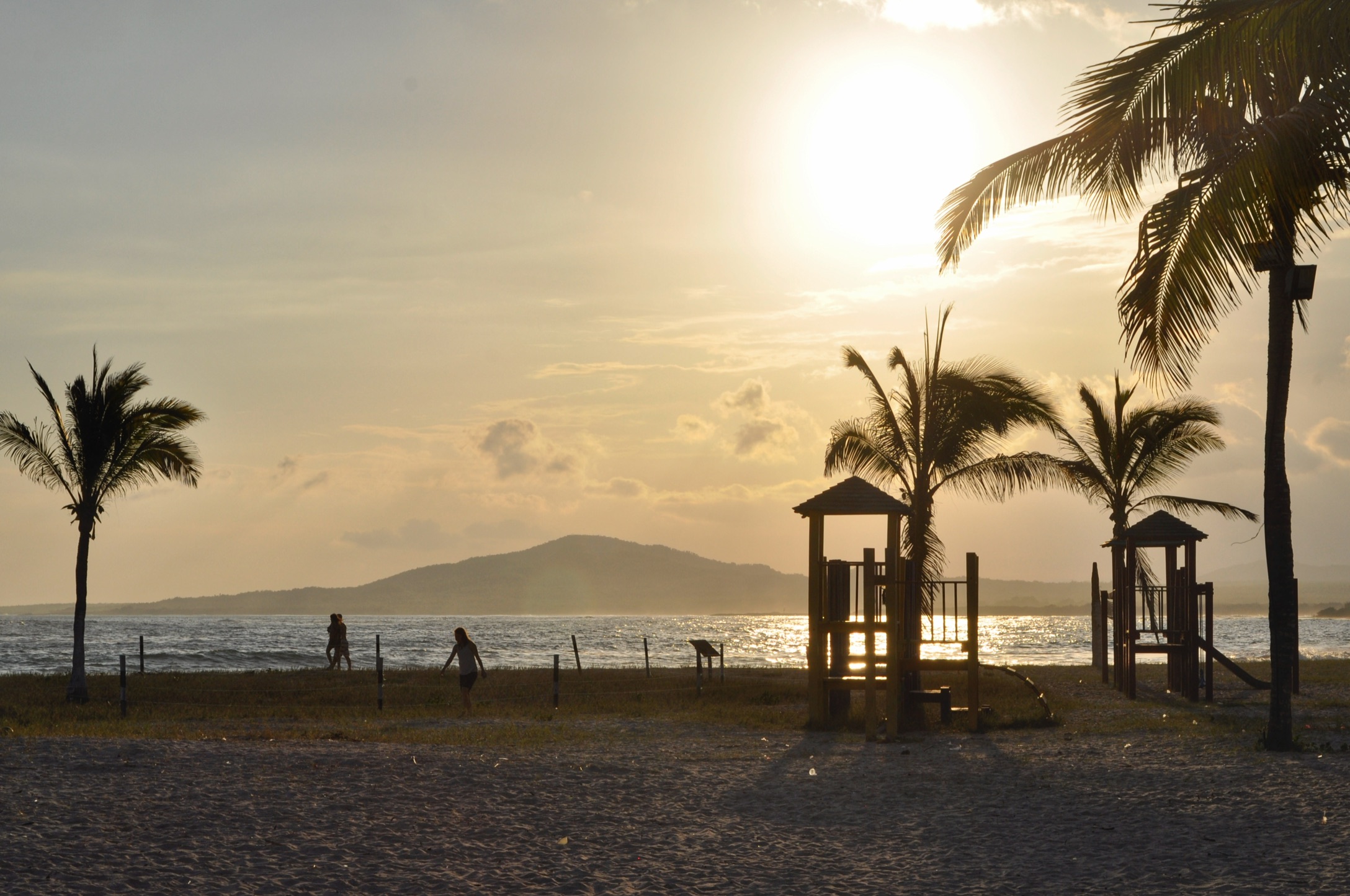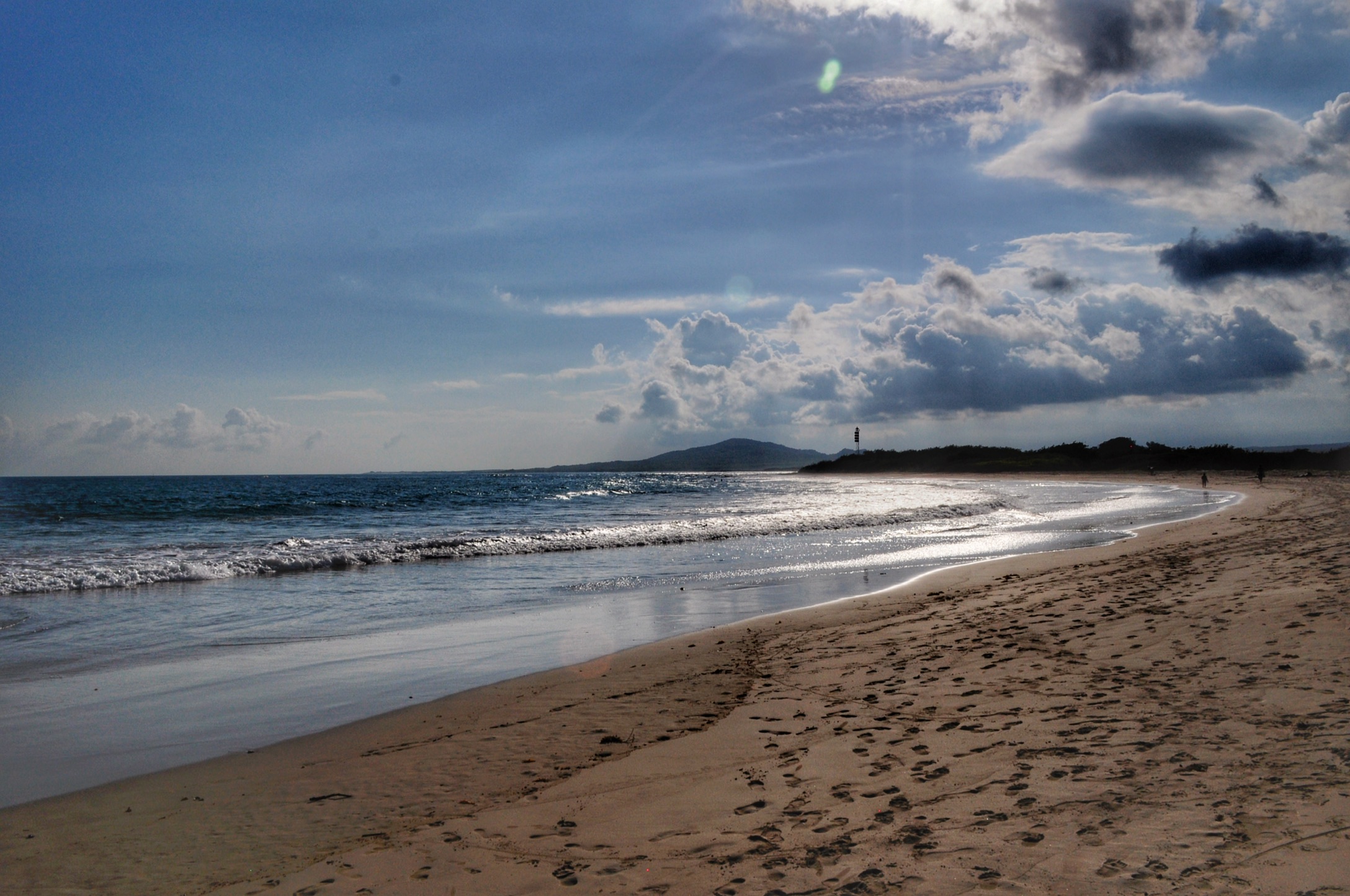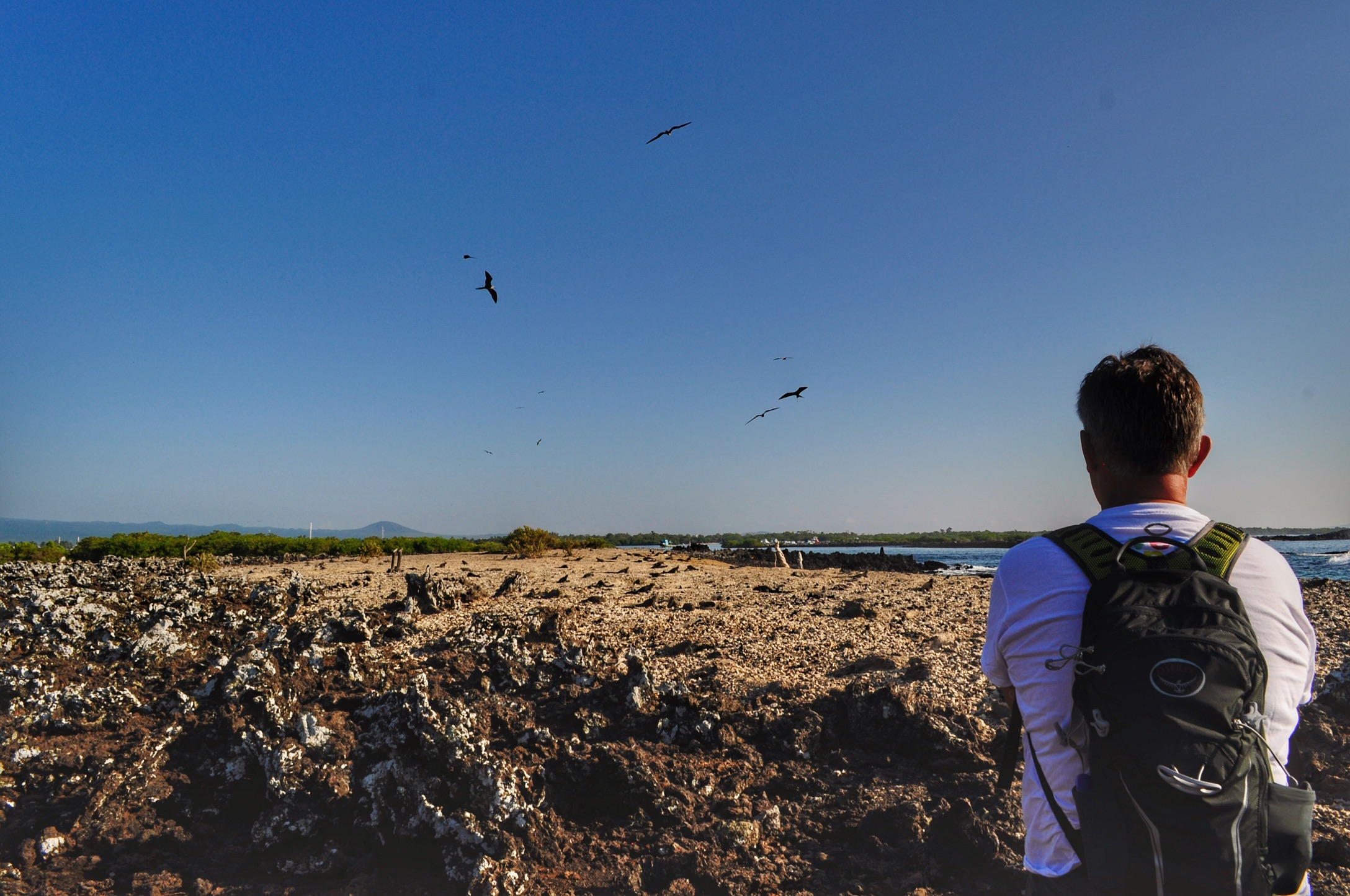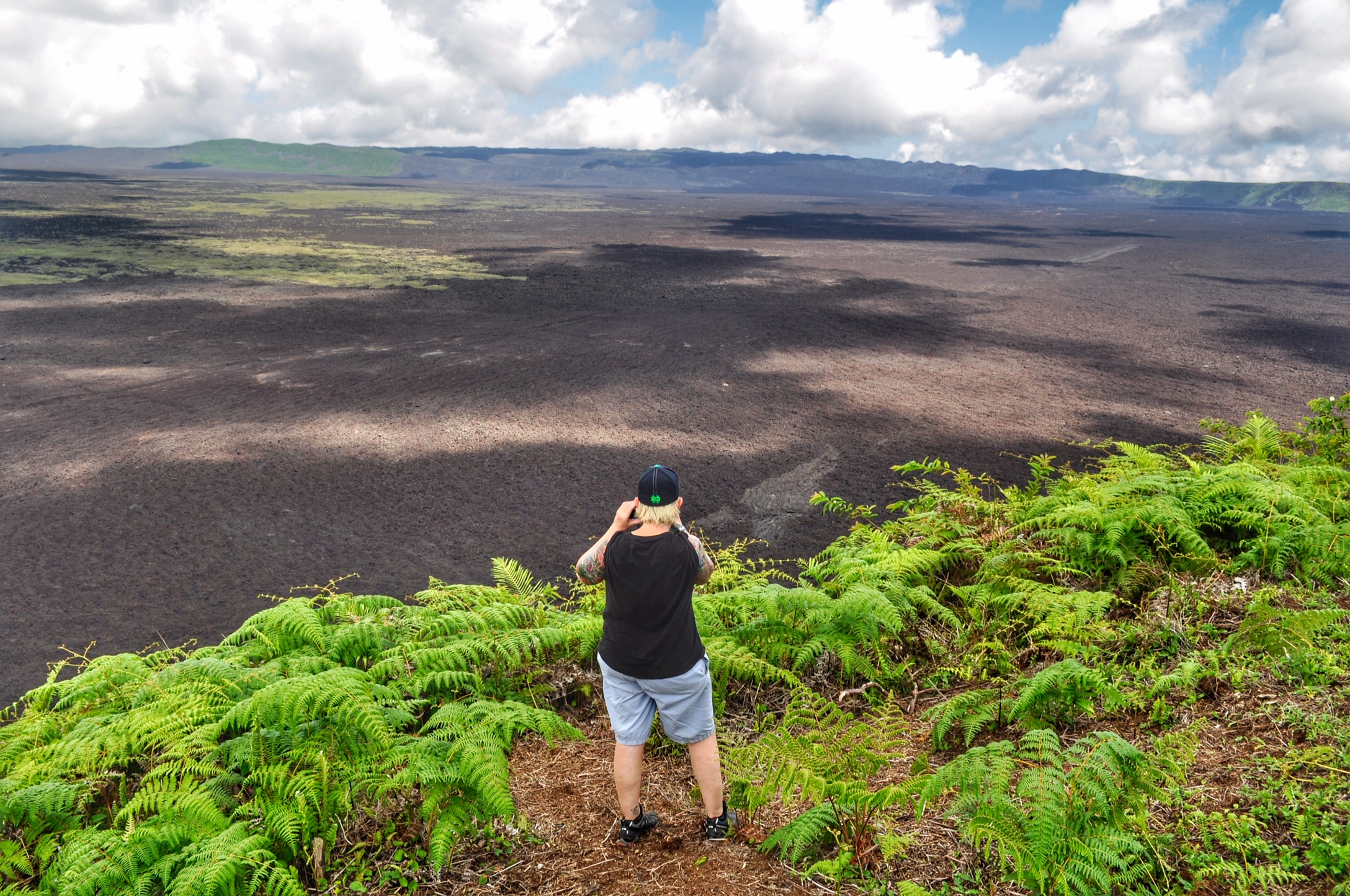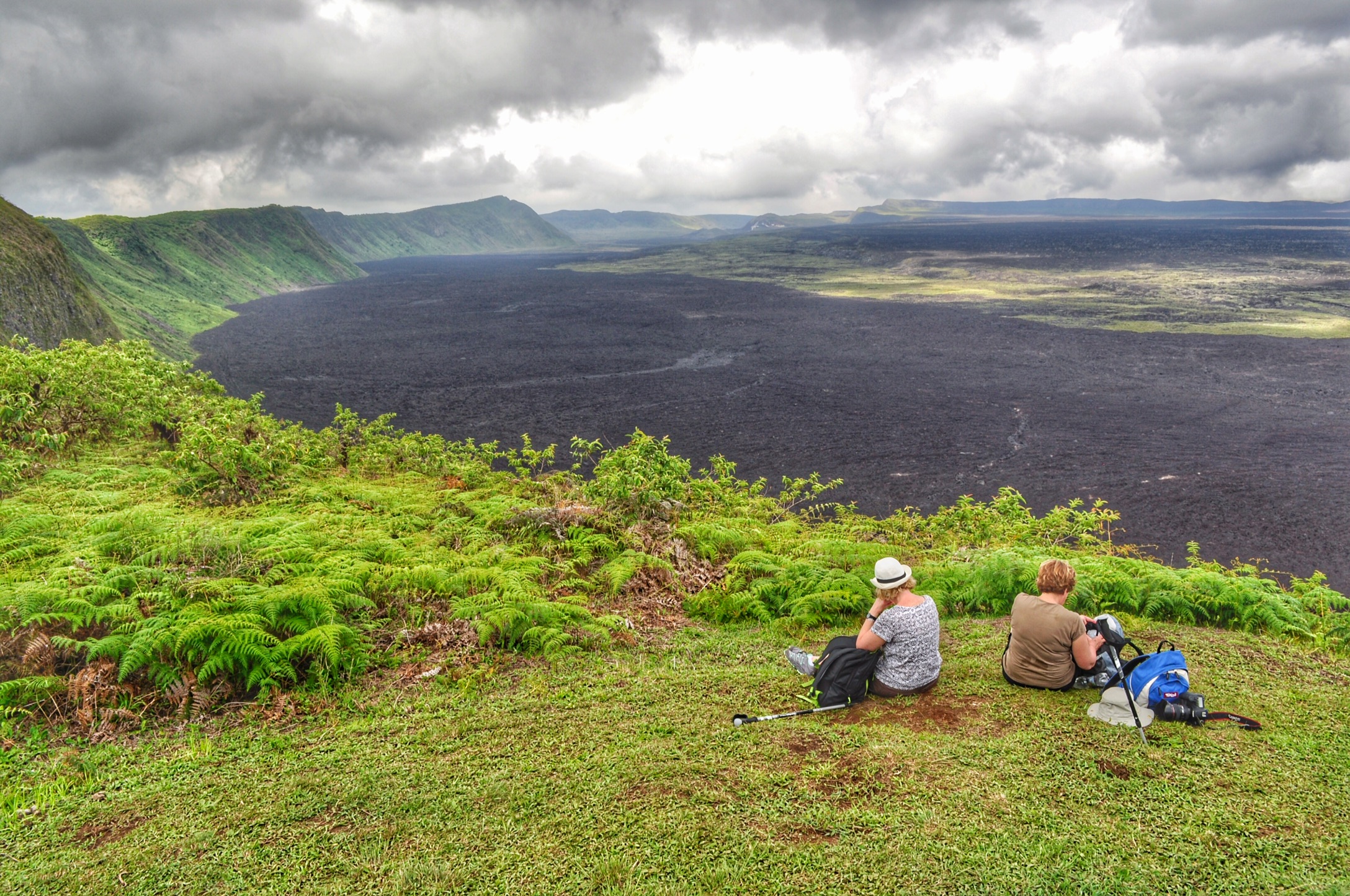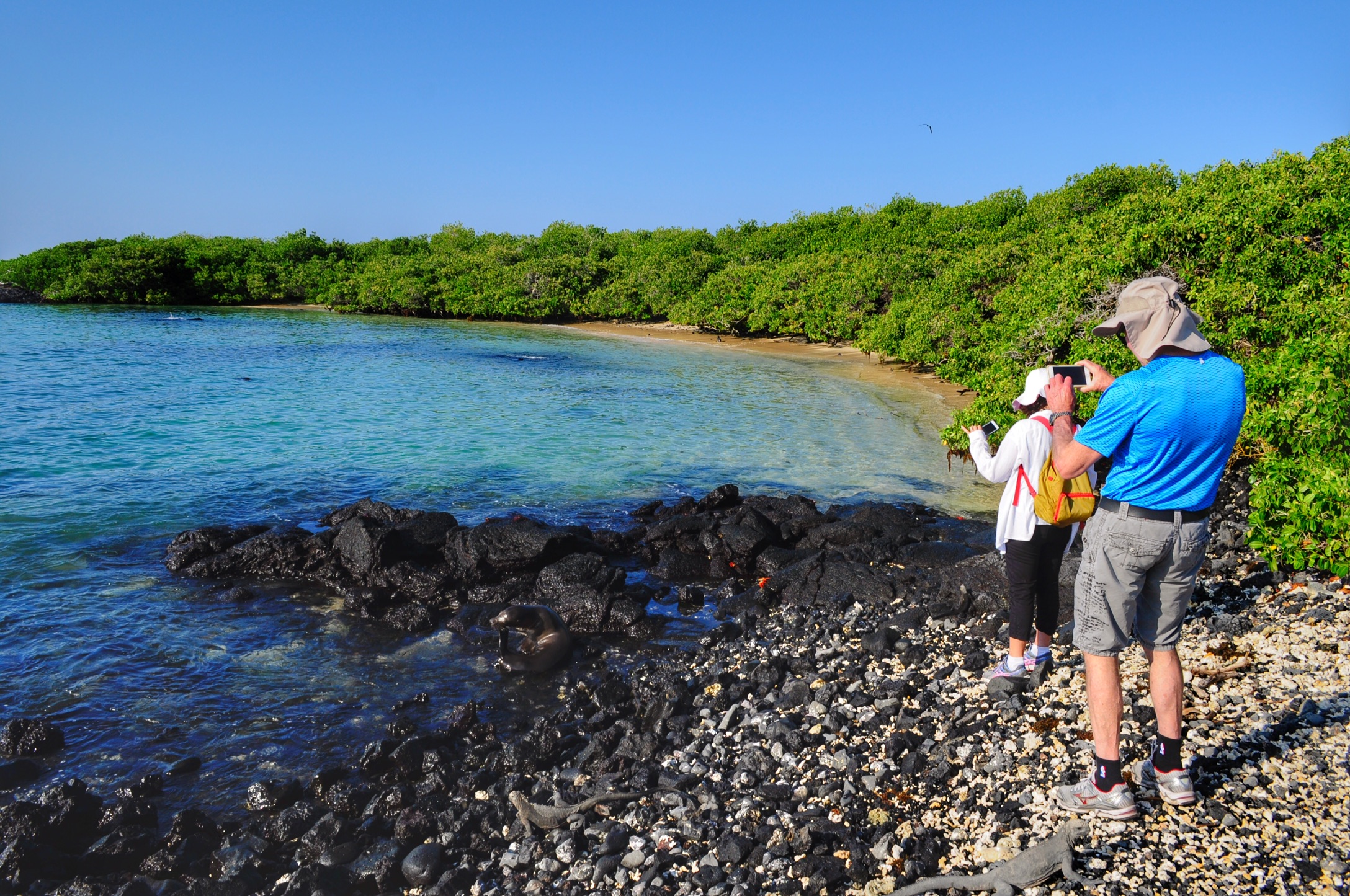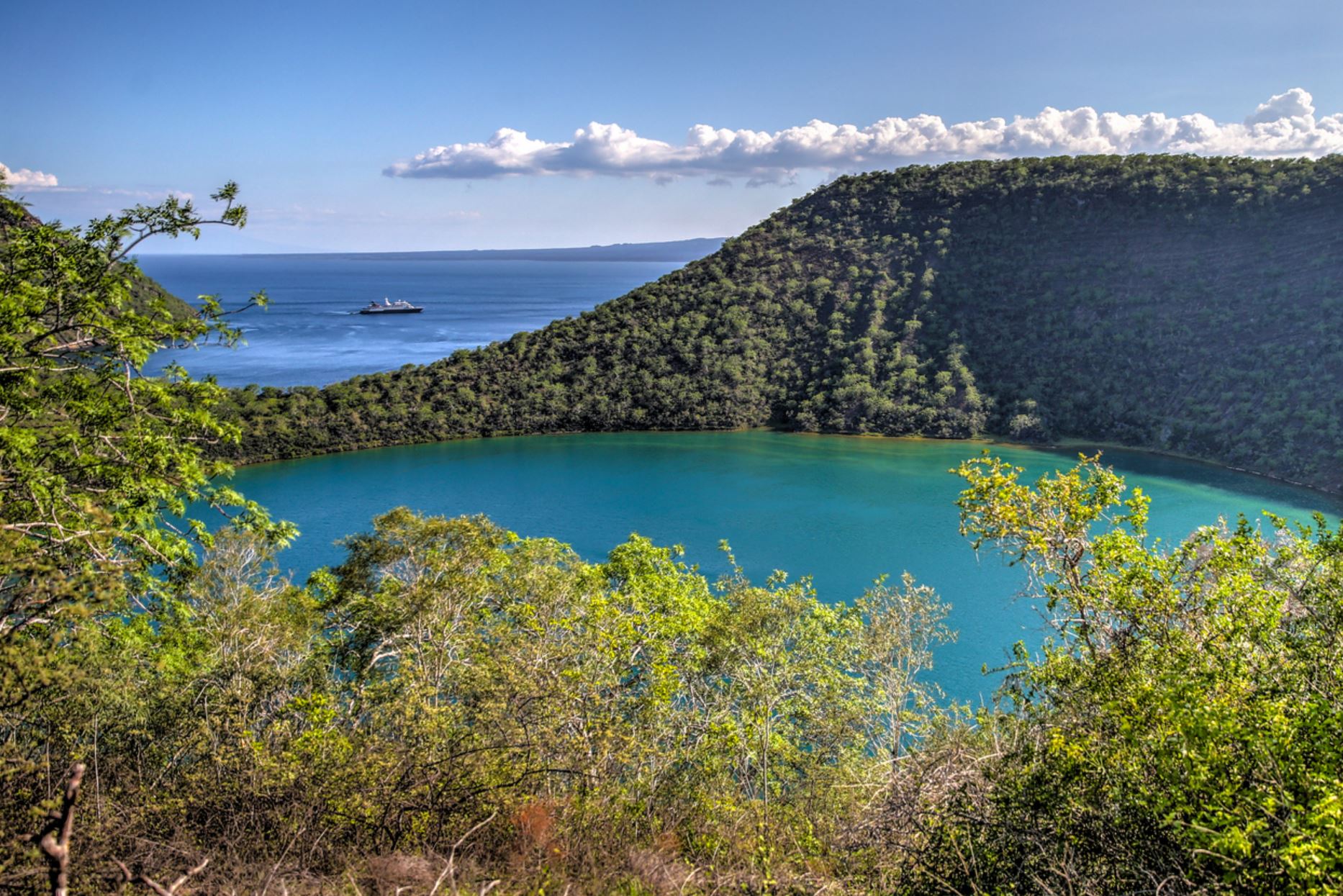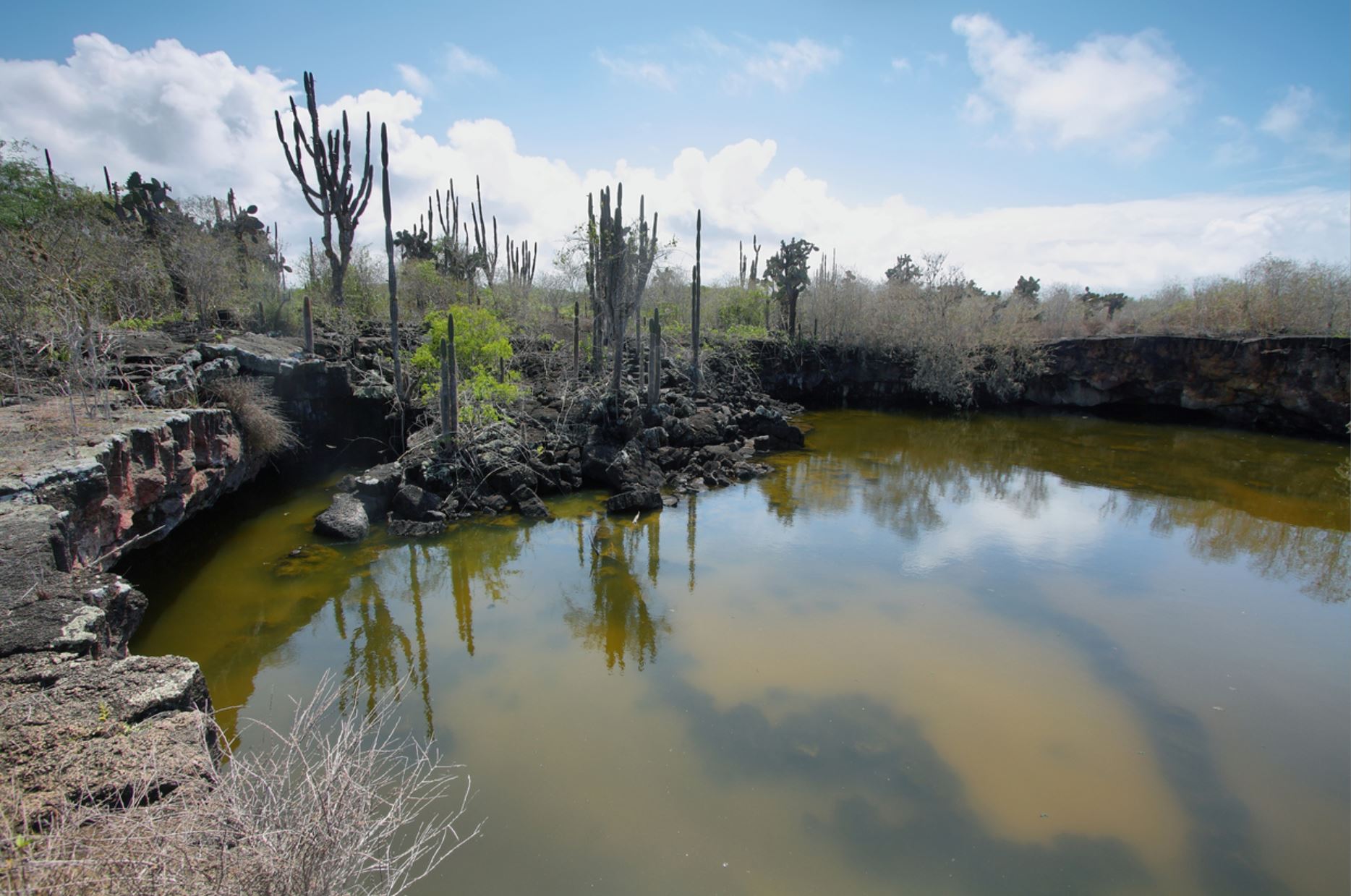Galapagos Martin
The Galápagos Martin (Progne modesta) is a species of bird in the Hirundinidae family. It is endemic to Ecuador. Its natural habitats are subtropical or tropical dry shrubland, subtropical or tropical seasonally wet or flooded lowland grassland, pastureland and heavily degraded former forest.
This is the only resident swallow family bird and can be seen performing acrobatic flies out of cliffs or in the interior of the calderas of the big volcanoes of Isabela.
The male Galapagos Martin is quite large and shows a dark blue – black plumage with paler underwings. The female is heavily streaked with brownish underparts.
The Galapagos Martins feed on what is known as aero plankton or little arthropods caught in flight. Their flying pattern is typical of martins with a series of short wing beats followed by a glide.
Galapagos Martins could be mistaken with any of the other two swallows that visit the archipelago but the Galapagos Martin is much bigger.
- Animal Group: Hirundinidae bird family
- Scientific Name: Progne modesta
- Animal Average Size: 2.9 to 3.2 feet
- Animal Average Weight: 5.5 to 11 pounds
Isabela
Pictures
Islands where you can see the animal with a little luck:
Isabela
The largest island of the archipelago and is easily recognized due to its shape that resembles a seahorse. Well known for having the second biggest active crater of the world in Sierra Negra Volcano (1.490 m), is located on the west of the archipelago and has one of the richest marine ecosystems. Isabela together with Fernandina are still located over the hot spot, causing volcanic activity until today, making them the youngest islands of the archipelago. Wolf Volcano had activity just last year giving visitors the chance to see how the islands grow and turn into what we know today.
It was formed into a big island mass by six volcanoes that in the beginning were six different islands, five of which are still active. Each one of them is populated by a different specie of Tortoise that used to live in a separated island.
Home of Penguins, Flightless Cormorants, Marine and Land Iguanas and many Marine Birds, Isabela also portrays the picture of the evolving process that these species went through in all different locations of the same island. Named Albermale by the English colonizers, it offers not only diverse ecosystems but also some of the most amazing landscapes and natural sights of the archipelago.
Small human population in the south of the islands. This is one of the four populated islands; about 2200 people live in Puerto Villamil. This town is the result of almost 300 years of interesting human interactions related to military plans and prison breakouts, and today is a welcoming site to explore and encounter the settlements that can tell the story.
Punta Vicente Roca visitor site is the best place to find the famous flightless cormorant. The evolution process that this specie went through can be observed on his behavior and environment on this location, providing evidence to understand Darwin’s theory of evolution. Located on the north side, the head of the sea horse is a very important marine productive area, hit by the Cromwell Current, offers the most extraordinary marine life so it is considered one of the best diving spots of the archipelago. Whales and sharks are often seen in our visits.
Bahia Urbina visitor site is located on the central west side of the island and is the only place of the archipelago where tortoises have been born and are still there, in other words, they are a natural, untouched population. All other have suffered migrations or problems with introduced species.
Visitors sites: Albemarle Point, Arnaldo Tupiza Tortoise Breeding Center, Cape Marshall, Concha de Perla, Cowley Islet, Elizabeth Bay, Las Tintoreras, Moreno Point, Puerto Viallmil, Roca Blanca, Sierra Negra Volcano, Tagus Cove, The Wetlands, Urbina Bay, Vicente Rock Point, Wall of Tears
Mr. Frobeen can give you precise information about the ships.
Mr. Frobeen will be happy to advise you by phone at +49 (0)7633 9399360 or via email info@frobeen.de
If you want to book, what are the payment methods?
The reservation is gratis as an option.
If you want to make an fixed booking, there is to pay a deposit of 20%.
The remaining payment is due 4 weeks before departure. In individual cases, such as diving cruises, other rules apply. Information on request.
- Your payments are insured against bankruptcy!

